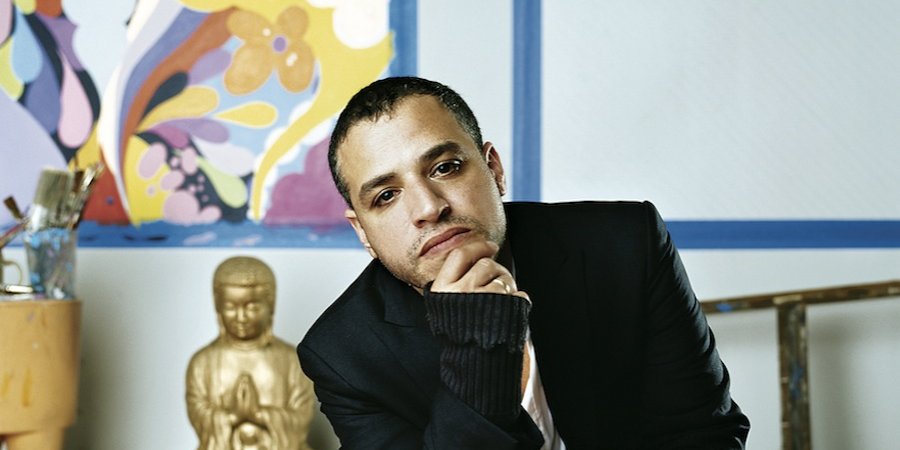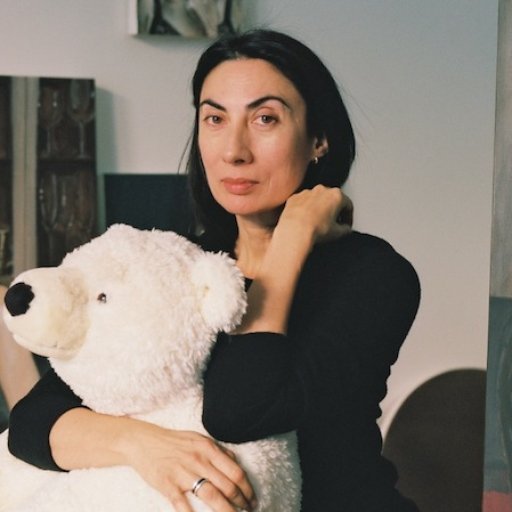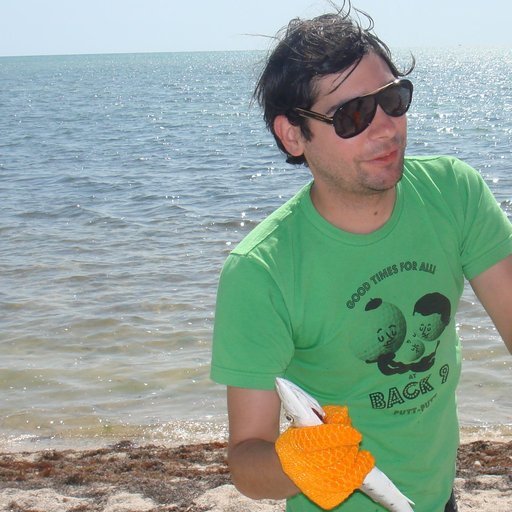An artist who works at the intersection of bling and the baroque, Carlos Rolon—whom you might know under the name Dzine—has for years made ornate artworks and installations that combine contemporary art strategies (like the readymade) with the "Kustom Kulture" and exuberant visuality of his Puerto Rican upbringing in Chicago. Perhaps best known for his over-the-top environments that encourage viewers to interact with elements of his childhood, Rolon (who is represented by Paul Kasmin Galleryand Salon 94) has been exhibited in prominent venues as diverse as Miami's Bass Museum of Art and the 2007 Venice Biennale, in which he was one of five artists representing Ukraine.
To find out the origins of his work, we spoke to Rolon about his inspirations, the evolution of his artistic approach, and what's so great about being a Chicago artist these days.
Though viewers may first be attracted by the flash and glamour of your work, your tricked-out cars and bejeweled bikes always allude to something more personal beneath the surface—often the collision between your American upbringing and your Puerto Rican heritage. What led you to examine that culture clash in your art, and how does it continue to influence your work?
Though I grew up in Chicago, my parents maintained a strong identity of Puerto Rican culture within the home. This was proudly instilled in me at a young age, but it provoked me to question identity and my personal surroundings. My parents didn’t immerse their kids in contemporary art, but food, music, culture, and language were always important in the home. This is the same intimate relationship that I want the viewer to experience in my work.
One of the best examples of this is my project Imperial Nails, a recreation of my mother's bootleg salon that she ran out of my childhood home. I feel this specific project brought a very personal insight and awareness of my studio practice to the general public—people now realize where my incorporation of Kustom Kulture, faux luxury, and excessiveness comes from. I was raised with it; it surrounded me daily in the form of faux Venetian wallpaper, porcelain tchotchkes, ornate chandeliers, mirrors, and other objects that refer to upper-class culture.
This is the case for many first-generation immigrants from other cultures whose families emigrated to the United States, and it's considered part of the blue-collar diaspora. These sorts of objects placed within the home are used to impress, out necessity or ego, or simply for comfort. What continues to influence my work is my desire to have the public rethink the objects I present outside of their original setting—but most importantly to allow people to relate to the work firsthand who would never otherwise consider visiting a gallery or institution.
Your Imperial Nails became a traveling installation that toured the New Museum, MCA Chicago, and other venues, allowing people to make appointments to have their nails done in extravagantly ornate styles. Are you personally interested in the increasingly fashionable—and highly Instagrammable—medium of "nail art"?
I’m not a nail artist, but I found through my research that it's not a specifically female ritual. The history of applying paint, dye, and adornments to nails to represent a kind of spiritual, cultural, or social status has a very long history. I found that "nail techs" and their clients have the same appreciation and passion as artists and their collectors and curators. The more involved I became, the more I learned it really is an art form—and while the people involved in this community have no formal art training, their passion to make beautiful, over-the-top ornamental objects truly struck me.
I also discovered that the people who build communities within the confines of a salon or home develop close friendships through which stories, gossip, and ideas are shared. So the installation seeks to create a conversation through the performative aspect of the work, but also to share my own biography with the viewer. Whoever is getting their nails done can imagine the experience of my own mother, her conversations, and her labor. I really do believe that art comes down to identity and self-expression.
To complement Imperial Nail Salon, you’ve also created an homage to your father, Victory, another traveling installation that celebrates his love of boxing through trophies and other memorabilia. What is the background to this body of work, and how has boxing inspired your art?
Sports have always played an important role in Latino Culture, especially in Puerto Rico and Cuba. Boxing, in particular, played a role within my childhood home. Watching ABC's "Wide World of Sports" on Saturdays was a way for me to connect with my father as a child, and watching a young Howard Cosell calling the Roberto Durán-Sugar Ray Leonard fight is a very strong memory to this day. So, again, the role of preservation and memory play a role. For this installation, the recreation of my childhood 1970s basement and a monumentalized version of our blue-collar trophy den are central, with works inspired by cockfighting, trophy jackets that my mother wore in the '70s, and blacklight velvet posters my older brother hung in his bedroom to create a visual dialogue between the physical charge of boxing and the garments worn by fighters like Macho Camacho and Prince Naseem Hamed.
I also created new sculptural works referencing the craftsmanship of belts and trophies. These new pieces acknowledge the ornate craftwork usually reserved for symbolic and heraldic achievements, with reference to first-place ribbons and championship plaques. The trophy sculptures in particular were created for people like my father and mother, who came to the U.S. with dreams and aspirations for a better life that never quite materialized, but who still achieved success in certain aspects of their life. My father, who wanted to be a Salsa musician, ended up a factory worker. My mother, who wanted to be a beautician, ended up working at a supermarket. Not that there's anything wrong with this, but there still were dreams deferred. Also, these works are meant to question why an individual values material objects based solely, and absurdly, on their shiny chrome or silver. The sculptures are meant to feel familiar—somewhat out of reach, but still accessible.
Boxing is a very physical sport, a performance in many ways. You also consider your own work to be performance-based. How does this aspect play out in your work?
Boxing has always had rich and colorful history. However, the sweet science is now as much entertainment as it is a sport, with prizefights now becoming more like performance art, complete with sequined entrance outfits structured to reflect the boxers' identities and fighters entering the ring with outlandish posturing, music, and custom light shows. I cultivated this phenomenon in my work.
Much of your art calls to mind the excess of Baroque and Rococo decorative objects, as well as the bling of rap videos. What role does this lavish visuality play in your art? Is there a critical element?
As I mentioned, I grew up surrounded by these elements, but what’s important to know is that the elements that surrounded me in my home were faux realizations of the real thing, which created an interesting dynamic. I don't make a connection to the use of “the bling of rap videos” as you suggest, but rather more of a commentary on it—and this is the critical element. The introduction of Kustom Kulture into my work actually happened by accident when I made a short film for the exhibition “Infinite Island” that Tumelo Mosaka curated at the Brooklyn Museum. The film was based on Benjy Melendez, a man of Puerto Rican descent who started a gang in New York, the Ghetto Brothers, and who kept a secret from his peers for many years—that he's Jewish. When I made the film, I felt I needed another element to tell his story visually other than just a screen on a wall. After some research, I found that one of Benjy's main modes of transportation was a bicycle, which immediately gave me the idea to produce a bicycle sculpture to be part of this story.
From that I began getting into customization, and the clubs that created their own communities and went around the city on their adorned bicycles wearing custom-made jackets as way of expressing their identity—which then led me to explore other custom cultures and the communities they created, like Pakistani Tuk Tuks, Haitian voodoo flags, lowrider culture, Japanese "Dekotora" art trucks, women who create bobbin lace, et cetera. These communities defy categories of race, gender, age, and financial status. However, it’s a paradox: some members of these communities invest their savings in creating custom parts with gold plating and engraving and custom fabric to adorn creations that few people will ever see. I love the psychology behind this—it’s about the work. Most importantly, these creators have what some artists lack: passion. Their passion and pride made me realize why I decided to become an artist. I love creating beautiful objects that are excessive, slightly obnoxious, and, in fact, somewhat ridiculous.
You were raised in Chicago, a city that has experienced a booming art scene over the last decade. How did growing up in that scene influence your art?
I discovered art on my own at a very young age. Obviously, I’ve always loved the great architecture here, but I have especially always loved the intimacy of Chicago neighborhoods and its side-street bungalows. No other major American city can claim those. Artistically, I was immediately drawn to the Chicago Imagists and the Hairy Who, with artists like Art Green, Gladys Nilsson, Jim Nutt, Suellen Rocc, Karl Wirsum, and Ray Yoshida playing a pivotal role. Ed Paschke was a major influence as well. I remember calling him personally at the age of 18 to try to get an internship with him—I was willing to sweep his floors and do whatever it took to be close to his artistic energy. Obviously, I'm now surrounded by my contemporaries here in Chicago, and some who have left, like Dawoud Bey, Bernard Williams, Iñigo Manglano-Ovalle, Laura Mosquera, Rashid Johnson, Angel Otero, Robert Davis, Michael Langlois, and Theaster Gates. We are friends and very much supportive of each other. It's inspiring.
Which artists have inspired you the most?
I’m very interested in the "artist's artist," like Mike Kelley, Nancy Rubens, Kerry James Marshall, and Jose Lerma. Most recently, I saw the Jim Hodges exhibition. It was such a powerful statement on fragility, hope, and desire. His use of readymades is unparalleled, and his work is so thoughtful—I love how he takes everyday objects and recontextualizes them in fascinating ways. Traditional, self-taught artisans are also some of my biggest inspirations, since craft and technique is something I love to explore, like such old-work techniques as angel gilding or bobbin lace. I try to pull from these disciplines and weave them into my own language.
Is there anything you collect yourself?
Aside from my large collection of vintage boom boxes, I also have a small but decent collection of art from the likes of Hiroshi Sugimoto, Takashi Murakami, Yoshitomo Nara, Robert Lostutter, Keith Haring, Rammellzee, Erik Hanson, and Jean-Michel Basquiat. I also recently purchased a work by José Luis Vargas from Roberto Paradise Gallery in Puerto Rico.
What are you working on now?
My current work has been focused on new mirror paintings that take their patterns from security fences on gates and windows found throughout Puerto Rican neighborhoods, emphasizing the relationship between decoration and protection in the home. I also have a large installation for a specially-curated section at Art Cologne called "Collaborations" opening in April, and a large site-specific installation at Museum Quarters in Vienna in October, and another show coming up at Walter Otero Contemporary in San Juan. Most important to me, though, is an exhibition I will open in Chicago this fall at Kavi Gupta Gallery. It will be a bittersweet homecoming after not having a solo exhibition here since 2006.



























